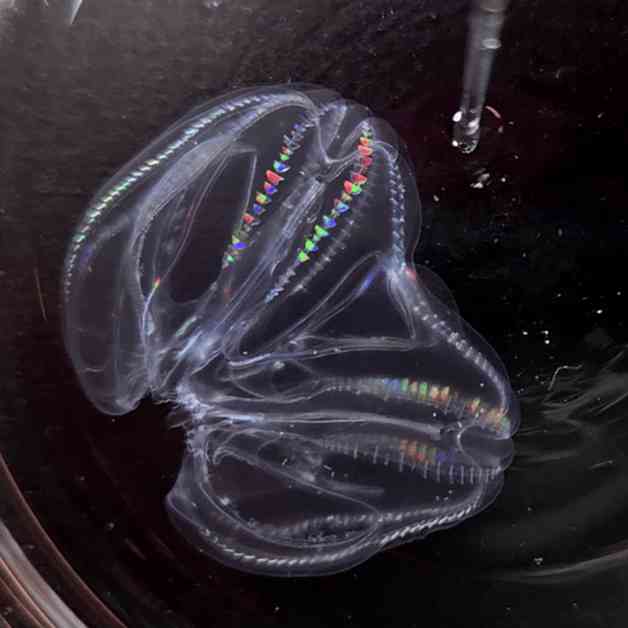In a fascinating discovery at the Marine Biological Laboratory in Woods Hole, Massachusetts, researchers observed a rare phenomenon where two injured comb jellies fused together to form one living organism. This unique creature, dubbed a “Franken-jelly,” captured the attention of scientists due to its unusual appearance and behavior.
Initially, researchers noticed a ctenophore, or comb jelly, with two distinct posterior ends, leading them to investigate further. Upon closer examination, it was revealed that two individual sea walnut comb jellies had sustained injuries and subsequently merged overnight to become a single entity. This merging process was so extensive that the two nervous systems of the comb jellies appeared to have joined, as evidenced by both bodies reacting simultaneously to external stimuli.
While this may seem like a bizarre occurrence, the fusion of comb jellies is not entirely unheard of in scientific circles. In fact, historical experiments conducted in the 1930s by marine biologist B. R. Coonfield at the same research station yielded similarly eerie results. However, with modern technology and tools, researchers like Kei Jokura and his team were able to study the fusion process in greater detail, capturing high-resolution images and monitoring the synchronization of nervous systems in real time.
One of the most intriguing findings from this study was the sharing of food between the two merged comb jellies, indicating a high level of integration between the two organisms. Despite this fusion, each jelly retained its individuality in terms of excretory functions, as they did not defecate simultaneously.
The implications of this research go beyond the realm of marine biology, as the fusion of comb jellies could potentially offer insights into transplant techniques in humans. By studying how these creatures tolerate foreign tissue without triggering an immune response, scientists hope to improve transplant procedures and reduce the risk of rejection in human patients. This highlights the importance of investigating simple organisms to uncover valuable information that may benefit complex life forms like humans.
Overall, the discovery of the fused comb jellies serves as a reminder of the wonders of the natural world and the potential lessons that can be learned from even the most unexpected sources. As researchers continue to unravel the mysteries of this phenomenon, new opportunities for scientific innovation and medical advancements may emerge, shaping the future of both marine biology and human health.










